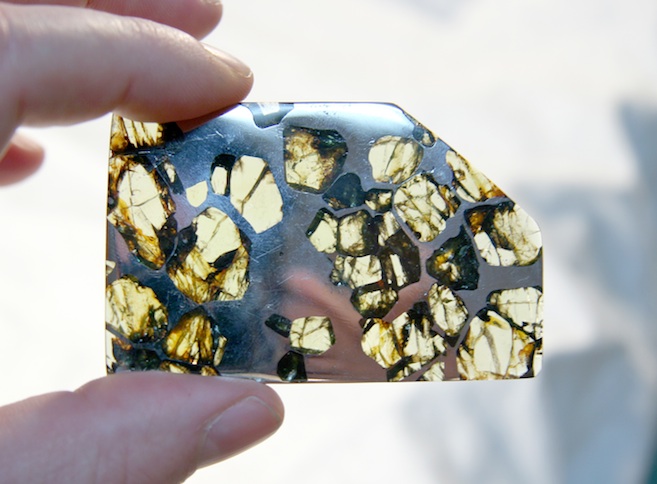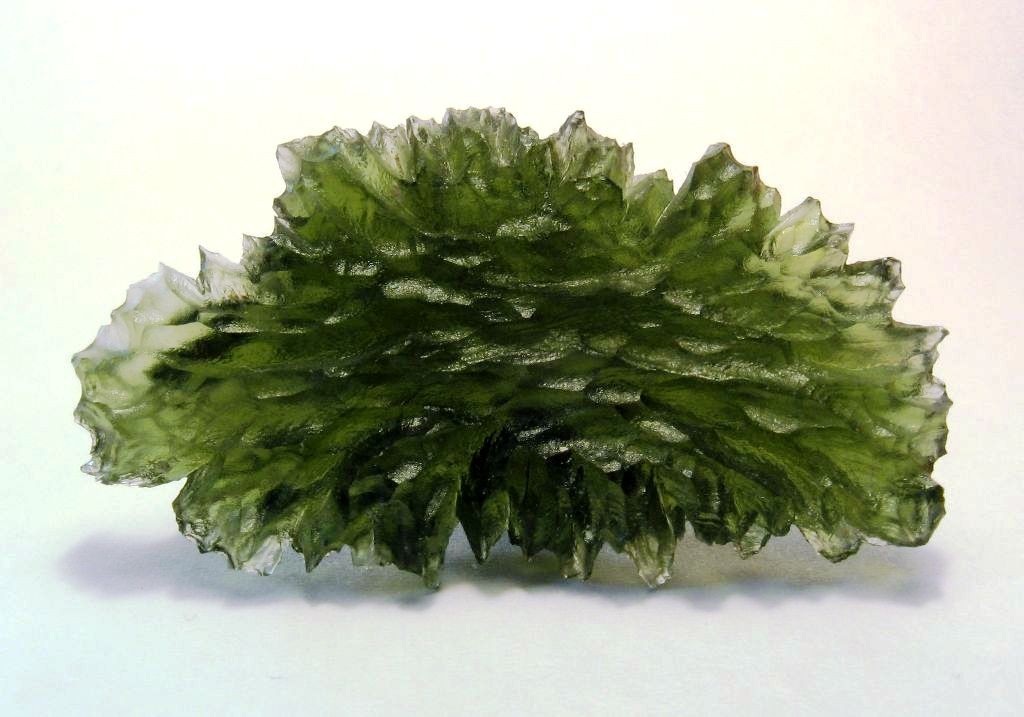Recently, a ten-ton meteor traveling at over seven hundred miles per hour breached the Earth’s atmosphere and exploded over Chelyabinsk, Siberia. Dishes, televisions, and windows shattered, and numerous people were injured. For a moment, people all over the world were fascinated by the possibility—and probability—of matter from outer space colliding with the Earth. For most people, this interest waned as soon as the next big story began to dominate the global press. For others, though, interest in extraterrestrial events is more than just a passing concern.
I spent a few happy years working in a gem and mineral shop in Santa Fe, New Mexico, and it was there that I learned about the point of intersection between the world of gemology and the world of astronomy. Santa Fe, of course, is the place to learn the business of extraterrestrial objects: Los Alamos National Laboratory, one of the world’s largest institutions devoted to science and technology research, is less than an hour away. Roswell, New Mexico—the ultimate mecca for alien enthusiasts—is in the region. In Santa Fe, and at the gem shop, I was never far from people for whom considering outer space was a daily activity.
Most gemstones form below the Earth’s surface (think quartz, emeralds, diamonds). But several can actually have origins that are of an extraterrestrial nature. Peridot is one of them. Admired for its deep, yellow-green hue, peridot is a kind of gem-quality olivine that is often set in jewelry (Archduchess Isabella of Austria famously wore an exquisite diamond and peridot tiara). But far beyond the jewelry store counter, traces of olivine have also been found on the surface of the moon and in the dust of comets. It’s been seen falling like green crystal rain on an infant star (it sounds too poetic to be true, but the phenomenon was observed by NASA using the Spitzer Space Telescope). It is also found in pallasites, a kind of meteorite believed to have originated during the formation of the solar system about 4.5 billion years ago. In the shop in Santa Fe, we had a few slices of this ancient, extraordinary material. Rare and very expensive, the best pallasite specimens are also terribly beautiful. Glossy green chunks of peridot pepper the dull, iron-nickel matrix that forms most of a pallasite’s mass. The cross-sections in the shop always elicited excited yips from visiting geologists and astronomers. Somehow, they resembled slices of shimmering four billion-year-old fruitcake to me.
In Santa Fe, the gemstone that garnered the most interest from those with a particular fascination with the extraterrestrial was moldavite. Moldavite, which is a lovely mossy green color, belongs to a variety of natural glasses classified as tektites. Most theories suggest that it formed when a meteorite hit the Earth approximately 14.8 million years ago. This meteor, the theory goes, impacted the Earth with such force that tons upon tons of earthly material were vitrified by heat and pressure and propelled into the atmosphere—only to land, once again, upon the Earth’s surface in what is now the Czech Republic.
In my mind, that’s amazing enough in itself. But there are some—particularly those in Santa Fe’s new age community—who believe that this molten material actually made it past the Earth’s atmosphere and into space before making its return to the Earth’s surface. There are some who believe that, during its brief spell in outer space, moldavite became imbued with certain special energetic properties, with certain powers.
Theories about the origins of moldavite get even more colorful. In the middle of the twentieth century, several NASA scientists suggested that the notable differences between moldavite and most earthly volcanic glasses could by explained by the theory that moldavite was actually produced by volcanic activity on the moon (for anyone Googling that right now: no, there are no volcanoes on the moon). After erupting from the moon’s surface, these theorists argued, moldavite eventually found its way to Earth. In the 1960s, a Russian-born mathematician named Dr. Matest M. Agrest even proposed that all tektites were formed as a result of nuclear blasts produced by extraterrestrials—yes, aliens—on Earth.
Needless to say, these latter examples are taking the possibilities beyond the realm of reason and science and into the territory of science fiction. But if you start to take an interest in the formation of gemstones, you will realize that they tend to come to being in extreme environments. It takes excesses of heat and pressure, and often millions of years, for these materials to form. When you consider this, extraterrestrial gemstones don’t seem so exceptional after all. They are just another glittering part of the story of the Earth’s formation, its solar system, and the eternal, extraordinary interplay between masses orbiting in space.





